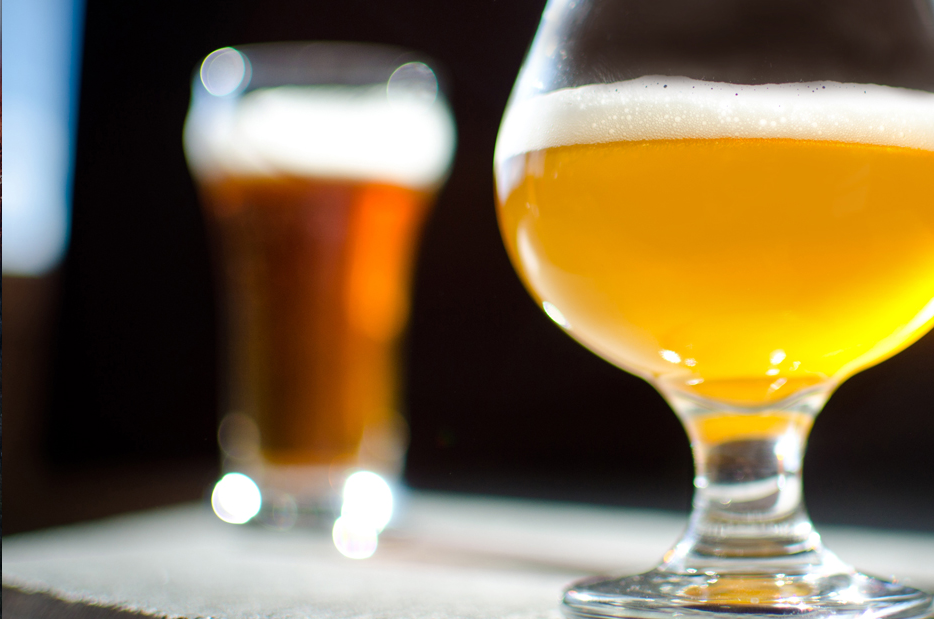No matter how seriously you take craft beer, you’ve likely come to understand that it’s a cerebral beverage that can push your palate to places it has not gone before.
To me and millions of others, craft beer forces thought provoking, descriptor rich, passionately deep conversations that are often reserved for discussion and appreciation of things like art, sports and food. With that intro, let us explore the beauty and wonder of esters, yes esters!
Q: What the heck are esters anyway?
A: A family of fruity smelling metabolites created by yeast during fermentation that are perceived in the aroma and flavor of craft-brewed beer.
While this answer seems pretty bland and boring, there’s much poetry behind this yeasty variable.
I argue that not being aware of beer’s yeast-derived offerings is like hearing a song in the background at a shopping mall compared to sitting in your favorite chair listening to the same song with headphones and picking out prominent instruments and vocals. Like with music, it’s possible to decipher how each element in a craft beer adds layer upon layer of influence to the whole gorgeous production.
Yes, esters play a starring role in my beer appreciation—oh yes they do! It’s rewarding to connect the dots on abundant flavors and aromas in beer from yeast including esters, phenols, diacetyl, acetaldehyde, alcohol and more.
“They [esters] give a soul to the beer,” said Chad Henderson, head brewer of NoDa Brewing Company in Charlotte, N.C. “I view malt as the backbone of the beer, but the esters are what give the beer definition. They play a different role in different beers, but the yeast by-products, mainly esters, have a place in beer and give it a character that you come to expect from that style. Some styles are way more dependent on this character. For example, Belgian beers, can have the most basic malt and hop bill but the esters open a whole world of flavors up for these beers. The rest of the beer is there to serve center stage to the yeast for beers like this.”
Q: What is brewer’s yeast?
A: Yeast is the living organism that turns water mixed with malt and adjuncts (fermentables that provide sugar) into fermented beer. The yeast eats sugars and produces carbon dioxide (the gas that makes up beer’s bubbles) and alcohol. Over 600 different kinds of yeast have been documented, though four create the majority of the different beer categories, with many variations among them: ale, lager, brettanomyces and weizen.
 The Physiology of Esters
The Physiology of Esters
Generally, fruity esters occur more frequently as a result of higher fermentation temperatures (above 65°F), and thus are more common in ales. Most lagers (usually fermented at 50°F or below) do not contain enough esters to perceive. The level of and type of esters in a beer will depend on yeast strain used, fermentation temperature and other variables. For example, beers fermented with true German weizen yeasts contain a characteristic banana aroma. The banana esters, by the way have their own category: isoamyl acetate, and are what make Bavarian wheat beers famous.
Garrett Oliver gives a geekier explanation in his Oxford Companion to Beer: “…during yeast fermentation ethanol (a form of alcohol) reacts with carboxylic acids to produce esters”. Esters are uncommon (and discouraged) in German and U.S. lagers, but are common and usually welcome to some degree in most ales.
How to Riff On Esters
In all my beery adventures, I’ve seen and heard the following aromatic descriptors applied to esters: fruity, fruity and fruity. But wait, there’s more! Expand your recognition vocabulary and taste or sniff for the whole produce section instead: apple, apricot, banana, black currant, cherry, circus peanuts, figs, grapefruit, kiwi, peach, pears, pineapple, plum, raisin, raspberry, strawberry and more.
Craft Beer Personified
As shared by Randy Mosher in Tasting Beer, too much of a good thing can be, well, too much. Some esters in higher concentrations can come across as solvent-like, or smell like nail polish remover. One such ester is ethyl (no not your long lost aunt) acetate, which at lower levels comes across like green apples.
Too much may not be desirable, but the right amount of fruity esters listed above are a huge part of the persona of many of today’s craft beers. “What I love about esters is the personality they give to beer,” said Jason Oliver, head brewer at Devils Backbone Brewing Co. in Roseland, Va. “If yeast gives life to beer, the esters as a result help form the personality in which the beer will exhibit. The same wort fermented with different yeast can create very different beers, largely due to esters.”
Remember, no one can tell you what you personally will perceive—you’re unique, with a palate that has its own fingerprint. But, the above descriptors are an excellent reference to help you get closer to identification based on your past experience and familiarity with examples of those aromatics and flavors.
Who Knew Brewers Were Poets?
Some of your favorite craft brewers try their hand at creating a little poetry outside your pint about their favorite metabolites.
Triolet On The Joys Of Isoamyl Acetate and Her Pals By Ethan Cox | president and co-founder | Community Beer Works | Buffalo, N.Y.
Behold the esters of your beer: banana, peardrop, apple-like The brewer’s charge, an overseer Behold the esters of your beer: (restrained, as not to interfere) roses, honey, solvent-spike! Behold the esters of your beer: banana, peardrop, apple-like.
An Ode to Esters By Jason Oliver | head brewer | Devils Backbone Brewing Co. | Roseland, Va.
Esters, esters, are good for the beer. How you ferment is how they’ll appear. Much less in a lager than in an ale, Swirl your glass around and pleasantly inhale.
O’ Ester My Ester By Seth Gross | owner | Bull City Burger and Brewery | Durham, N.C.
There’s something on my mind regarding esters If I don’t let out the thought it just festers
Chemical compounds with nuances of fruit Aromas expelled when our yeasts toot
If you find your ale a little off or bland Watch your pitch rates from the corny can
Keep your temperatures proper or at least up high You’ll achieve the flavors that’ll make you cry
Tears of joy from apricots, pineapple and banana Tears of pain if nail polish…. …Wipe your eyes with a bandana
Esters Haiku One By Seth Wright | brewer | Wachusett Brewing Co. | Westminster, Ma.
Yeast stress shall dictate Levels of isoamyl acetate Brewers salivate
Esters Haiku Two By Grant Pauly | owner | 3 Sheeps Brewing Co. | Sheboygan, Wis.
Be gone orange slice, You have no place in my glass, Esters reign supreme!
So what ester-driven craft beers from today’s small U.S. producers are you in love with? Ester haiku anyone? Please share!
CraftBeer.com is fully dedicated to small and independent U.S. breweries. We are published by the Brewers Association, the not-for-profit trade group dedicated to promoting and protecting America’s small and independent craft brewers. Stories and opinions shared on CraftBeer.com do not imply endorsement by or positions taken by the Brewers Association or its members.


Share Post